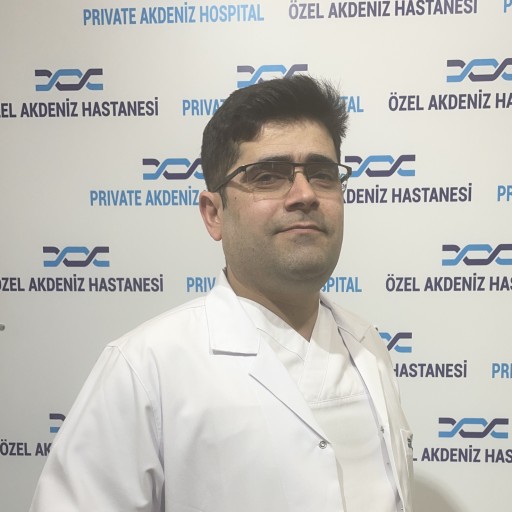
About the Department
Otolaryngology

OUR SERVICES:
⇒ ENT examination and treatment of diseases
⇒ Nose curvature surgery
⇒ Surgical interventions for the sinus
⇒ Tonsil and adenoid surgeries
⇒ Tympanoplasty (Surgical interventions for chronic ear diseases)
⇒ Surgical interventions for hearing loss
⇒ Surgical interventions for hoarseness (vocal nodule, polyp)
⇒ Surgical interventions for superficial tumors of the head and neck region
⇒ Surgical interventions on the salivary glands
⇒ Surgical interventions for fractures of the nasal and facial bones
What is ENT?
Otolaryngology Anatomy and Diseases
Ear
The ear (auris) is the anatomical structure that functions as hearing and contains the balance organ.
It is analyzed in three parts:
External ear
middle ear
inner ear
Nose
The nose, anatomically, is an outward protruding, two-hole olfactory and respiratory organ located between the forehead and upper lip on the face. The nasal cavity opens out with two holes. On the other hand, it connects to the pharynx. There are mucus layer, capillaries and hairs in the nose.
Throat
The throat is the second unit of the digestive system after the mouth, which starts from the lower part of the skull and joins with the esophagus at the level of the cartilage of the lower larynx, the walls of which are formed by the muscles.
Throat; It opens to the back of the nasal cavities in the anterior upper part, the oral cavity in the anterior middle, and the larynx cavity at the lowest part. The tonsils are located at the junction of the throat with the oral cavity.
Ear Nose Throat Diseases
1. Tonsil Inflammation
Tonsils are lymph nodes. a It is one on each side behind your mouth. Among other tasks, it also has to filter harmful microorganisms that enter the mouth. But when too many bacteria enter, they cannot resist. they become inflamed and swollen. This is called tonsillitis (tonsillitis). It is very common especially among children.
Symptoms
1) Sore throat, Headache, Fever and chills, chills,
2) Painful glands in the throat and jaw
If you or your child experience symptoms of tonsillitis, get plenty of rest, eat soft foods, and drink watery foods that will soothe your throat. Gargling with warm salt water reduces pain.
2. Nasal Flesh
Together with the tonsils, they form a part of the lymphoid tissue called adenoids (adenoids, tonsilla pharyngea, vegetation). It is the other tonsil located in the space behind the nose. These small tonsils are not seen on examination. It protects the respiratory tract against viruses and microbes coming from outside.
If the flesh of the nose is frequently infected, it grows, becomes a germ nest and causes constant throat, ear and nose diseases.
Symptoms of adenoid hypertrophy may begin in infancy. In addition to sleep disorders, loss of appetite, snoring, sometimes difficult breathing symptoms such as nasal wing breathing can be seen.
3. Pharyngitis
It is an inflammation of the covering tissue in the posterior wall of the pharynx. This may be due to either no irritation or a bacterial infection.
Symptoms of pharyngitis Pain in the back of the pharynx, difficulty swallowing and fever. Apart from these symptoms, malaise often occurs.
4. Throat Reflux
The stomach secretes acid to digest the food that comes to it. The valve system, which exists to prevent stomach contents and liquid from leaving the stomach, tries to prevent the leakage of gastric fluid from the stomach. When the valve between the stomach and the esophagus (lower esophageal sphincter) does not work properly, the acidic contents of the stomach escape up into the esophagus. This is called “Gastroesophageal reflux (GER)”.
When the valve between the esophagus and the throat (upper esophageal sphincter) does not work, the stomach contents reach the throat and larynx, that is, the vocal cords, which are much more sensitive to acid, stomach contents and bile. This condition is called “Laryngopharyngeal reflux (LFR)”.
This reflux is different from the commonly known stomach reflux. Upper reflux in the throat is more common during the day and while standing, while stomach reflux is more frequent and uncomfortable while lying down. The sensitive structure of the larynx and pharynx tissues and some nervous reflexes and esophageal movements also play an important role in the development of LPR.
5. Sinusitis
Sinusitis means infection of the sinus cavities. In order for sinusitis to occur, the sinuses must not perform their normal functions and bacteria must settle in the sinus.
Occlusion of the channels connecting the sinuses with the nasal cavity is one of the main factors in the formation of infection. Due to a simple cold or allergic disease, the mucous membrane lining the ducts and sinus cavities swells. As a result, air entry into the sinus and the passage of the mucus in the sinus into the nose are prevented. Decreased oxygen in the sinus impairs cell functions. Infection begins with the growth of bacteria that will be expelled from the sinus.
Although the treatment of sinusitis can be done quite effectively, serious complications can be seen, albeit rare. Since the sinuses are adjacent to the eye and brain, infections can cause problems in these organs.
Service Provider In This Area
Doctors





